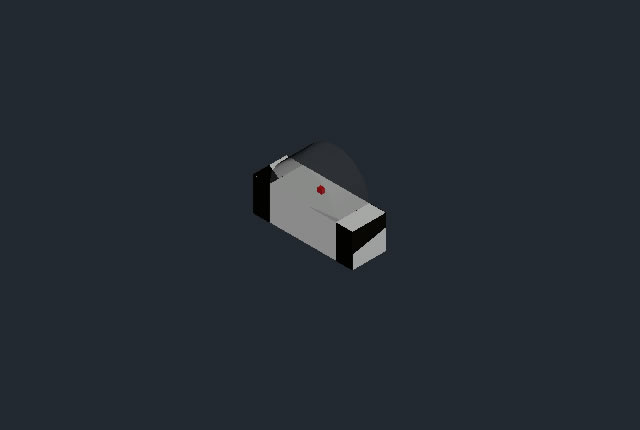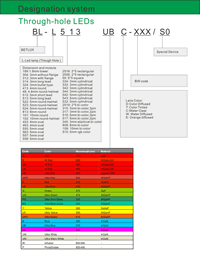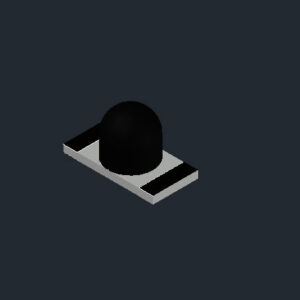Discrete LEDs package
Series No:
Weight:(g/pcs)
Dimension:(mm)
Package:
Specification:
Inquiry
Description:
“Precision Detection and Efficiency: The 3010 SMD LED Photodiode Side-Emitting Solution”
Introduction
In today’s rapidly evolving electronics industry, Photodiodes have become indispensable components for sensing, detection, and optical communication. Among these, the 3010 SMD LED diode, Photodiode, side-emitting model stands out for its compact design, high responsiveness, and precise light detection capabilities. Designed for efficient optical signal conversion, this diode delivers accuracy and durability in various industrial, consumer, and communication applications.
The Photodiode operates by converting light energy into electrical current, playing a crucial role in infrared sensing and optical detection systems. Often referred to as an IR diode, it efficiently detects light in the infrared spectrum, ensuring fast and reliable signal processing. Its side-emitting structure allows it to capture light from specific angles, enhancing sensitivity and integration flexibility in compact designs.
This professional-grade diode is also commonly used as a Photodiode receiver in smart control systems, automation devices, and optical encoders — applications that rely heavily on consistent performance and compact surface-mount integration.
Features of the 3010 SMD LED Photodiode
The 3010 SMD LED diode represents a perfect combination of advanced semiconductor technology and precise optical design. Its side-emitting Photodiode structure and surface mount configuration make it highly efficient and easy to integrate into modern electronic systems.
Key Features:
-
Compact 3.0mm x 1.0mm SMD Package:
The small form factor makes the Photodiode ideal for tight spaces, maintaining performance while minimizing circuit footprint. -
Side-Emitting Design:
Unlike conventional top-view diodes, the side-emitting IR diode captures or emits light horizontally, ideal for edge-lighting or optical sensing applications. -
High Responsivity:
The Photodiode receiver delivers fast and accurate detection of visible or infrared light, crucial for automation and sensing systems. -
Low Dark Current:
Reduced noise ensures superior signal clarity and precision, making it suitable for sensitive instruments. -
Excellent Temperature Stability:
Engineered to perform under varying temperature conditions, ensuring stable operation in industrial environments. -
Surface Mount Design:
The surface mount LED-style package supports automated production for consistent quality and reduced assembly costs. -
Durable Construction:
Built with robust encapsulation materials, offering vibration resistance, long operational life, and reliability under stress.
Applications of 3010 SMD Photodiodes
The 3010 SMD LED Photodiode finds extensive applications in industries that depend on optical sensing and data communication. Its IR diode capabilities and precision response make it an integral part of advanced electronic systems.
-
Infrared Remote Controls and Sensors:
Used in consumer electronics for motion detection, remote signaling, and touchless switches. The Photodiode receiver ensures accurate infrared light detection. -
Optical Communication Systems:
The IR diode functions effectively as a signal receiver in fiber optic communication, providing stable and fast light-to-electric conversion. -
Industrial Automation:
Integrated into machinery for object detection, proximity sensing, and position tracking, enhancing automation reliability. -
Medical Equipment:
Utilized in heart rate sensors, pulse oximeters, and diagnostic instruments where precision light measurement is critical. -
Security and Surveillance Systems:
The Photodiode plays a vital role in motion sensors, door detectors, and light barriers. -
Smart Devices and IoT Systems:
Compact size and high sensitivity make the SMD 3010 Photodiode suitable for embedded systems and wireless control devices. -
Optical Encoders and Counters:
Acts as a Photodiode receiver for rotational or linear position feedback in automation and robotics.
Benefits of the 3010 SMD Photodiode
The 3010 SMD LED diode is engineered to deliver superior performance with enhanced precision and energy efficiency. It provides multiple benefits that cater to both technical and commercial applications.
-
Exceptional Sensitivity:
The Photodiode offers rapid response to changes in light intensity, enabling precise measurement and detection. -
Compact Integration:
Its surface mount LED design allows seamless PCB integration, suitable for miniaturized and high-density circuits. -
Wide Spectral Range:
The IR diode can detect light across visible and infrared wavelengths, ensuring versatility in different environments. -
Energy Efficiency:
Operates on low power, reducing energy consumption and heat generation, extending component life. -
High Reliability:
The Photodiode receiver is designed for long-term stability, maintaining consistent performance in harsh conditions. -
Low Noise Operation:
The minimized dark current and stable signal output make it ideal for applications demanding precision and accuracy. -
Ease of Assembly:
The SMD 3010 Photodiode is compatible with automated soldering and inspection systems, supporting large-scale production.
Case Studies
Case Study 1 – Industrial Automation Systems (Germany):
An industrial robotics manufacturer integrated 3010 SMD Photodiodes for optical sensing in robotic arms. The side-emitting IR diode allowed accurate distance sensing with minimal space usage. The system’s reliability improved by 20%, reducing sensor errors in reflective environments.
Case Study 2 – Medical Monitoring Devices (USA):
A health-tech company implemented Photodiode receivers in wearable medical devices for pulse and oxygen detection. The SMD 3010 LED Photodiode provided high sensitivity and fast response, enhancing accuracy in patient monitoring systems.
Case Study 3 – Consumer Electronics (Japan):
A leading electronics brand adopted IR diodes in their smart TV remote control systems. The surface mount LED design improved the manufacturing efficiency, while the Photodiode‘s fast response enhanced device interaction.
User Testimonials
Daniel Wong, Product Engineer (Singapore):
“We’ve tested multiple models, but the 3010 SMD Photodiode stands out for its responsiveness and durability. It’s ideal for compact PCB layouts.”
Megan Liu, R&D Specialist (China):
“The side-emitting IR diode design allows more flexibility in our automation systems. It performs well even in challenging industrial conditions.”
James Turner, Electronics Procurement Manager (UK):
“The Photodiode receiver integrates seamlessly into our products, offering both reliability and easy assembly during mass production.”
Conclusion
The 3010 SMD LED diode, Photodiode, side-emitting model is an advanced solution for engineers and designers seeking accuracy, reliability, and compact performance. Combining the sensitivity of Photodiodes with the robustness of a surface mount LED package, it offers unmatched versatility for modern electronics.
Its side-emitting IR diode structure ensures optimal light detection and signal transmission in space-constrained applications, while the Photodiode receiver function guarantees precision in optical sensing and control. Whether for industrial automation, medical devices, or communication systems, the SMD 3010 Photodiode stands out as a trusted component for high-performance applications.
By merging high sensitivity, compact design, and energy efficiency, the 3010 SMD Photodiode continues to lead in innovation—empowering the next generation of optical detection and smart technology systems.

Features of 3010 SMD Photodiode Diode (Side Emitting):
- Compact 3010 package: 3.0mm x 1.0mm.
- Photodiode with side-emitting capability.
- Compatibility with automatic placement equipment.
- Wide viewing angle for versatile visibility.
- Applications include remote control, IR wireless data transmission, and security alarms.
- Package: 3,000 pieces.
- RoHS compliance for environmental consideration.
Possible Applications:
- Infrared remote control systems.
- IR wireless data transmission.
- Security alarm systems.
- Proximity sensors.
- Ambient light sensing.
- Smart home applications.
- Gesture recognition systems.
- Object detection.
- Optical encoders.
- Communication devices.
- Industrial automation.
- Medical equipment.
- Consumer electronics.
- Wearable technology.
- Smart appliances.
- Automotive applications.
- Robotics.
- Customized infrared projects.


Electrical-optical characteristics:
Package configuration & Internal circuit diagram
Obtain 3D specification files
To examine all 3D specifications, save the files to your local drive and open them with your 3D application.
Lens colors in 3D files are solely for visual representation; consult the Datasheet for accurate lens type and color information.
In the event of a mismatch, the dimensions in the datasheet take precedence over the 3D specifications.
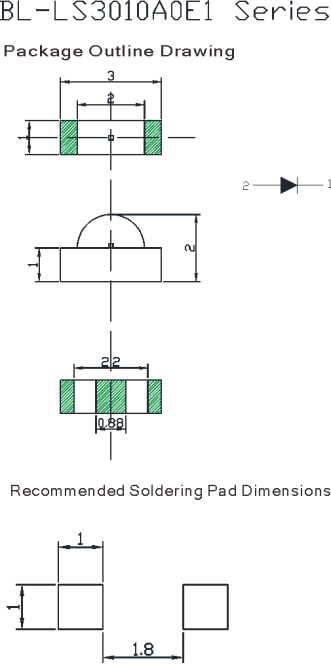
All dimensions are in millimeters(inches)
Tolerance is +-0.25(0.01″) unless otherwise note
Specifications are subject to change without notice.
Partno description:
More Information
Lens Color:
| Code | D | T | C | W | E | |
| Meaning | color Diffused | Color Tinted | Water Clear | Water Diffused | Orange diffused |
Absolute maximum ratings (Ta=25°C)
| Parameter | SR | LR | UR | UE | UY | UG | PG | BG | B | UB | UV | W | Unit |
| Forward Current I F | 25 | 25 | 25 | 30 | 30 | 30 | 30 | 30 | 30 | 30 | 30 | 30 | mA |
| Power Dissipation P d | 60 | 60 | 60 | 65 | 65 | 75 | 110 | 110 | 120 | 120 | 120 | 120 | mW |
| Reverse Voltage V R | 5 | 5 | 5 | 5 | 5 | 5 | 5 | 5 | 5 | 5 | 5 | 5 | V |
| Peak Forward Current I PF (Duty 1/10 @1KHZ) | 150 | 150 | 150 | 150 | 150 | 150 | 150 | 100 | 100 | 100 | 100 | 100 | mA |
| Operation Temperature T OPR | -40 to +80 | °C | |||||||||||
| Storage Temperature T STG | -40 to +85 | °C | |||||||||||
| Lead Soldering Temperature T SOL | Max.260+-5°C for 3 sec Max. (1.6mm from the base of the epoxy bulb) | °C | |||||||||||
Related Information
Applied for:
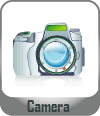
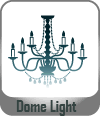
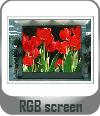
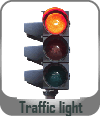
The LEDs described here are intended to be used for ordinary electronic equipment (such as office equipment,
communication equipment and household applications). Consult Betlux’s Sales in advance for information on
applications in which exceptional reliability is required, particularly when the failure or malfunction of the LEDs
may directly jeopardize life or health (such as in aviation, transportation, traffic control equipment, medical
and life support systems and safety devices).
CAUTIONS for Through-Hole LED Lamps
1. Application
The LEDs described here are intended to be used for ordinary electronic equipment (such as office equipment, communication equipment and household applications). Consult Betlux’s Sales in advance for information on applications in which exceptional reliability is required, particularly when the failure or malfunction of the LEDs may directly jeopardize life or health (such as in aviation, transportation, traffic control equipment, medical and life support systems and safety devices).
2. Storage
The storage ambient for the LEDs should not exceed 30℃ temperature or 70% relative humidity. It is
recommended that LEDs out of their original packaging are used within three months
For extended storage out of their original packaging, it is recommended that the LEDs be stored in a sealed
container with appropriate desiccant or in a desiccator with nitrogen ambient.
3. Cleaning
Use alcohol-based cleaning solvents such as isopropyl alcohol to clean the LED if necessary
4. Lead Forming & Assembly
During lead forming, the leads should be bent at a point at least 3mm from the base of LED lens. Do not use
the base of the leadframe as a fulcrum during forming.
Lead forming must be done before soldering, at normal temperature.
During assembly on PCB, use minimum clinch force possible to avoid excessive mechanical stress.

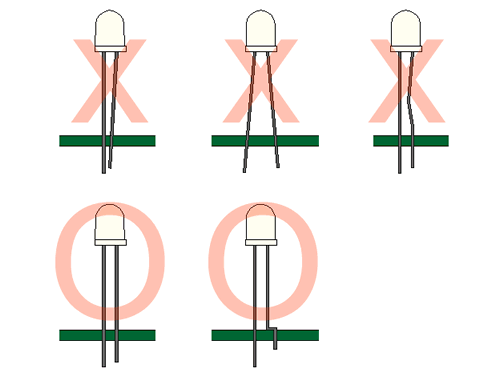
Soldering
When soldering, leave a minimum of 2mm clearance from the base of the base of the lens to the soldering point. Dipping the lens into the solder must be avoided.
Do not apply any external stress to the lead frame during soldering while the LED is at high temperature.
Recommended soldering conditions:
| IR Reflow Soldering (for SMD display) | Wave Soldering | Soldering Iron | |||
| Pre-Heat | 150-180°C | Pre-Heat | 100°C Max. | Temperature | 300°C Max. |
| Pre-Heat Time | 120sec Max. | Pre-Heat Time | 60sec Max. | ||
| Peak Temperature | 260°C Max. | SolderWave | 260°C Max. | Soldering Time | 3sec Max.(one time only) |
| Soldering Time | 10 sec Max. | Soldering Time | 5sec Max. | ||
Note: Excessive soldering temperature and/or time might result in deformation of the LED lens or failure of the LED
ESD(Electrostatic Discharge)
Static Electricity or power surge will damage the LED.
Suggestions to prevent ESD (Electrostatic Discharge):
n Use a conductive wrist band or anti-electrostatic glove when handling these LEDs
n All devices, equipment, and machinery must be properly grounded
n Work tables, storage racks, etc. should be properly grounded
n Use ion blower to neutralize the static charge which might have built up on surface of the LED’s
plastic lens as a result of friction between LEDs during storage and handling
ESD-damaged LEDs will exhibit abnormal characteristics such as high reverse leakage current,
low forward voltage, or “no light on” at low currents. To verify for ESD damage, check for “light on”
and Vf of the suspect LEDs at low currents.
The Vf of “good” LEDs should be>2.0V@0.1mA for InGaN product and >1.4V@0.1mA for AlInGaP
product.

Drive Method
An LED is a current-operated device. In order to ensure intensity uniformity on multiple LEDs connected in
parallel in an application, it is recommended that a current limiting resistor be incorporated in the drive circuit,
in series with each LED as shown in Circuit A below.
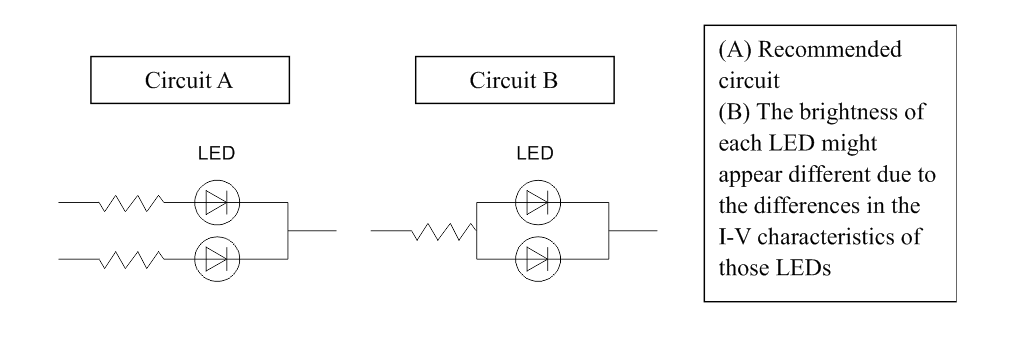
When selecting power for LED systems, it’s essential to understand several key parameters to ensure safe operation, longevity, and optimal performance. Here are some steps and considerations for LED power selection:
- Determine the Forward Voltage (Vf) of the LED(s):
Each LED has a forward voltage, which is the voltage at which the LED operates when the current is flowing through it. This value can typically be found in the LED’s datasheet.
- Determine the Forward Current (If) of the LED(s):
The forward current is the current at which the LED is designed to operate. Running an LED at higher than its rated current can reduce its lifespan and increase the heat it produces.
- Decide on the Configuration:
Series Configuration: When LEDs are connected in series, the forward voltages add up, but the current remains the same.
Parallel Configuration: When LEDs are connected in parallel, the forward voltage remains the same, but the currents add up. This configuration can be risky because if one LED fails or has a slightly lower forward voltage, it can cause the other LEDs to draw more current.
Calculate Total Power Requirements:
Power (W) = Total Forward Voltage (V) x Total Forward Current (A)
For example, if you have three LEDs connected in series, each with a forward voltage of 3V and a forward current of 20mA, the total power requirement would be:
Power = (3V + 3V + 3V) x 20mA = 9V x 0.02A = 0.18W
- Select an Appropriate Power Supply:
- Voltage Rating: The power supply voltage should match or slightly exceed the total forward voltage of your LED configuration.
- Current Rating: The power supply’s current rating should meet or exceed the total forward current of your LED configuration.
- Safety Margin: It’s a good practice to select a power supply that can provide at least 20% more power than your calculated requirement. This ensures the power supply isn’t operating at its maximum capacity, which can extend its life and ensure safer operation.
- Consider Additional Features:
- Dimming Capability: If you want to control the brightness of your LEDs, choose a power supply with dimming capabilities.
- Overcurrent and Overvoltage Protection: To protect your LEDs, select a power supply with built-in protection mechanisms.
- Thermal Management: Ensure that the power supply has adequate cooling, especially if it will be enclosed or in a location with limited airflow.
- Regulation and Efficiency:A power supply with good regulation will maintain a consistent voltage output despite variations in the load. High efficiency ensures minimal power is wasted as heat.
- Physical Size and Form Factor:Depending on where you plan to place the power supply, its size and shape may be critical factors.
In summary, when selecting power for LED systems, understanding your LED’s requirements and the configuration you plan to use is essential. Then, pick a power supply that meets those needs with some added safety margin, keeping in mind any additional features or constraints relevant to your project.
Here are some well-regarded brands in the industry:
- Mean Well: One of the most recognized brands in the LED power supply industry, Mean Well offers a wide range of products suitable for both indoor and outdoor applications. Their units often come with features like overcurrent protection, dimming capabilities, and high efficiency.
- Tridonic: A global leader in lighting technology, Tridonic offers LED drivers and power supplies that cater to various lighting solutions, from simple setups to advanced smart lighting systems.
- Philips Advance Xitanium: Philips is a well-known brand in the lighting industry, and their Xitanium series of LED drivers are known for reliability and performance. They cater to both indoor and outdoor LED applications.
- Osram: Another giant in the lighting industry, Osram offers a range of LED drivers and power supplies suitable for various applications, including architectural and street lighting.
- LIFUD: Specializing in LED drivers, LIFUD is known for its high-quality products that cater to both commercial and residential LED lighting solutions.
- MOSO: This brand offers a variety of LED drivers, especially for outdoor and industrial applications. Their products are known for durability and performance.
- TDK-Lambda: With a history in power electronics, TDK-Lambda offers a range of power supplies and LED drivers suitable for various applications, emphasizing reliability and advanced features.
